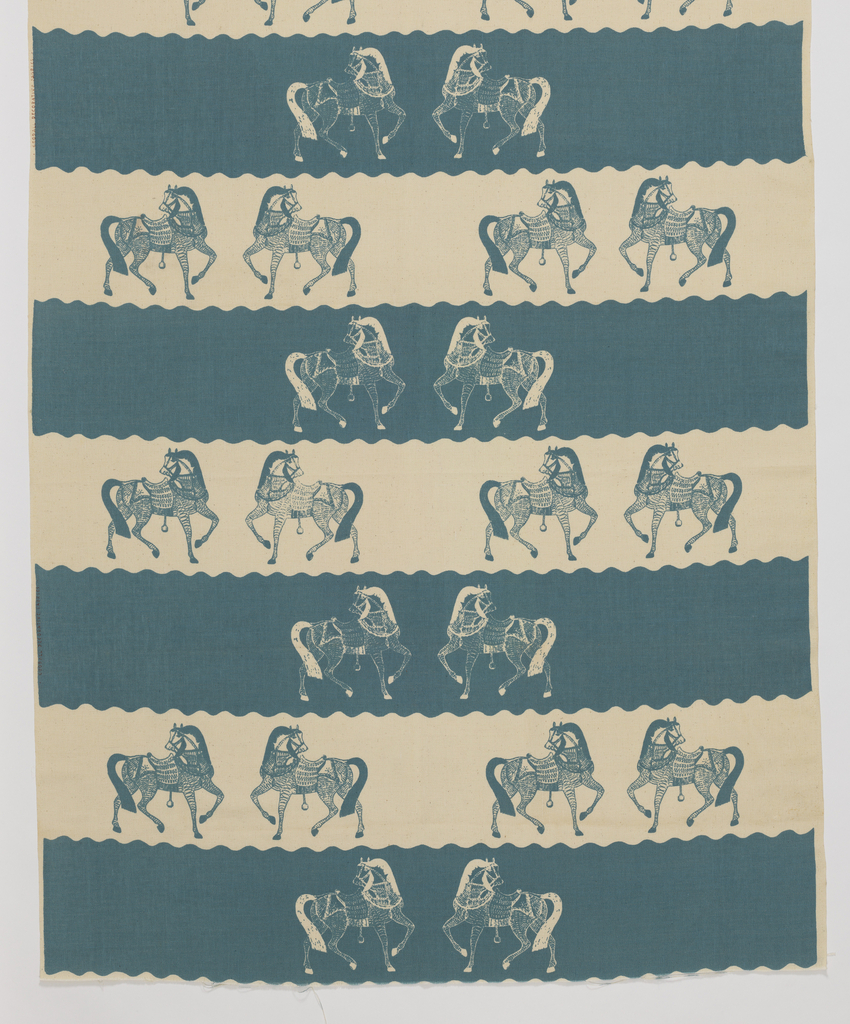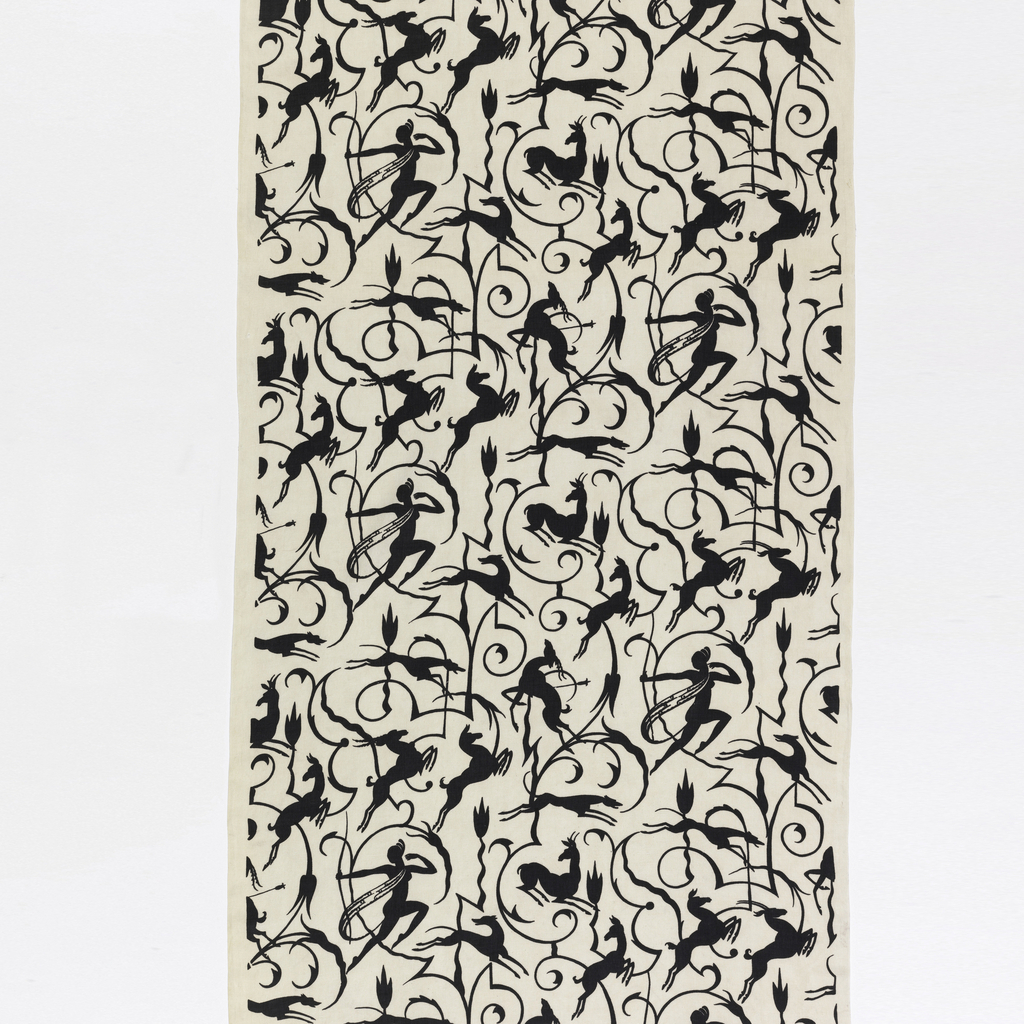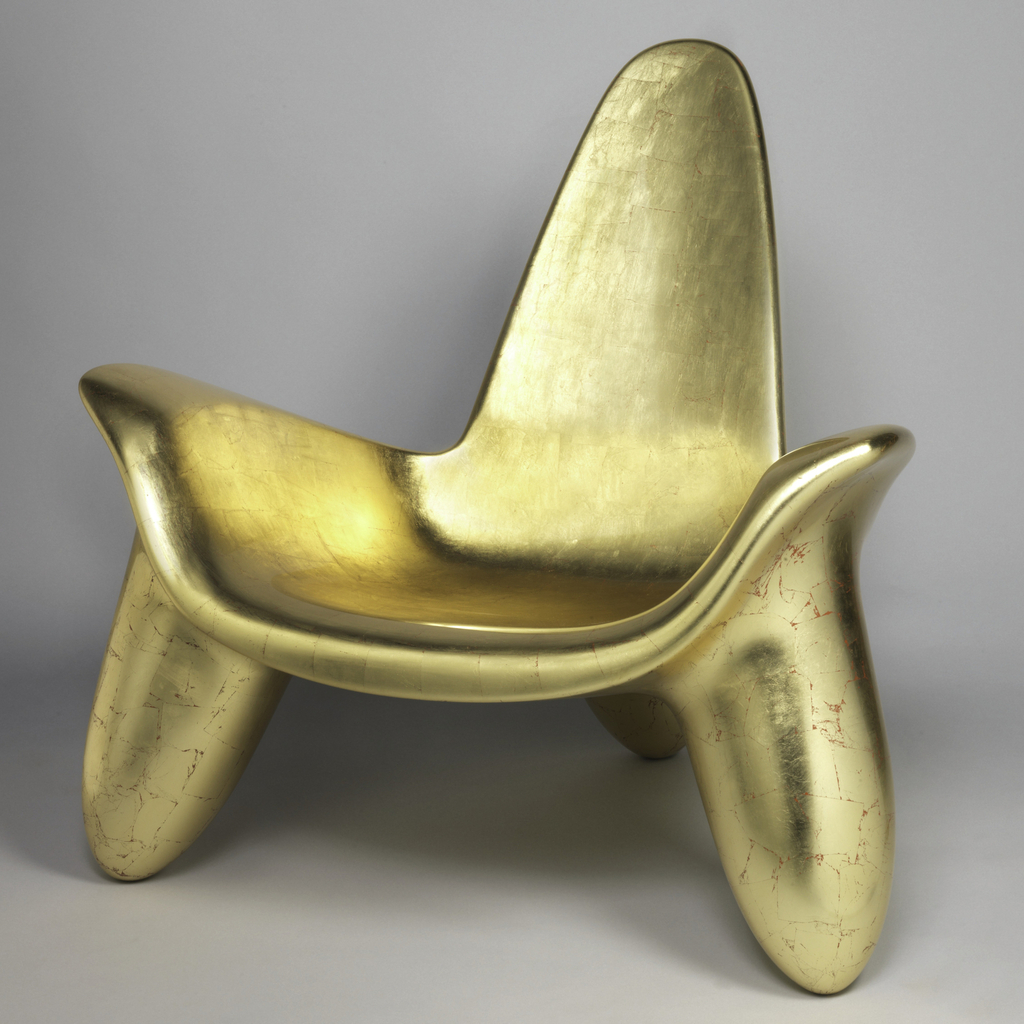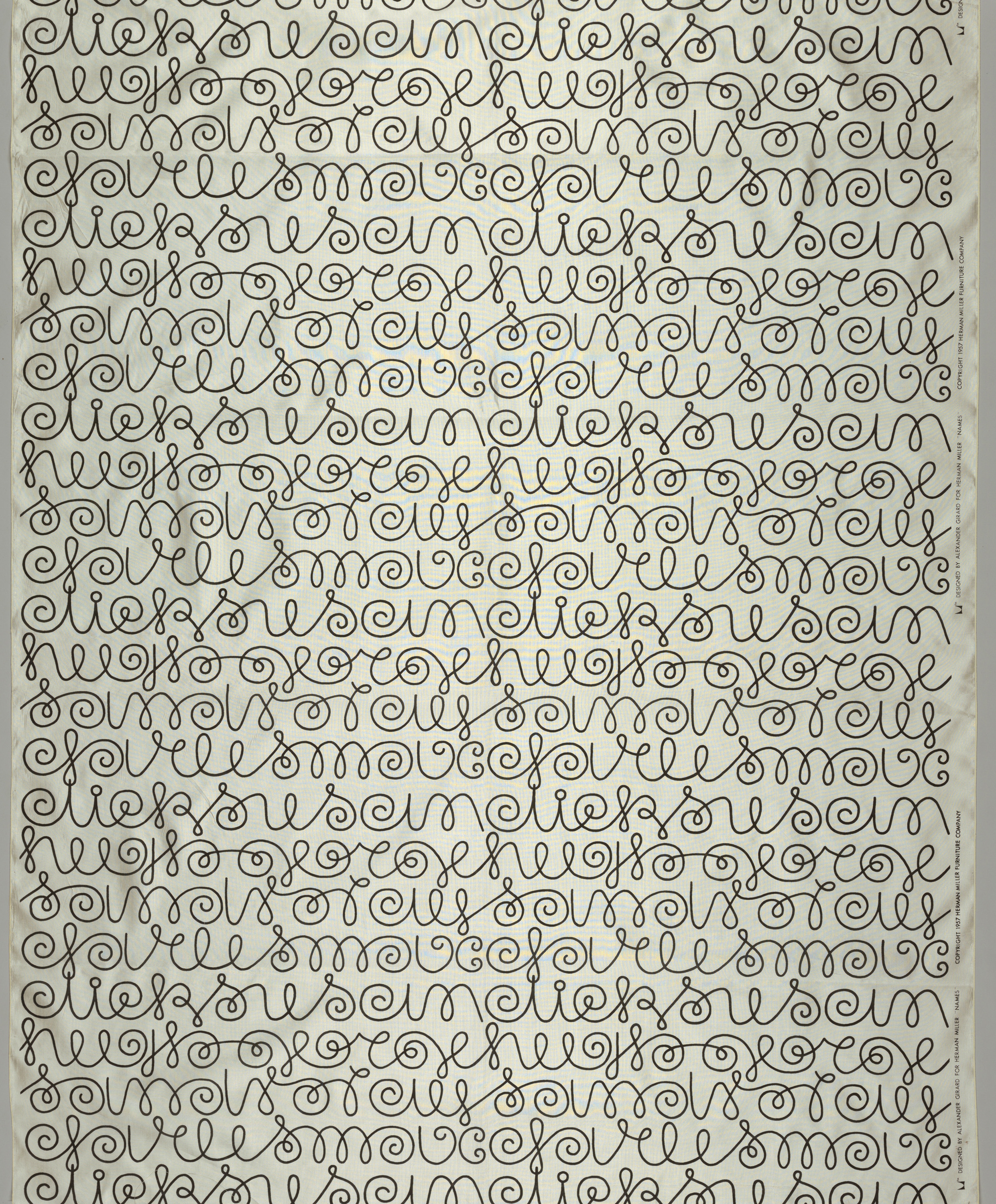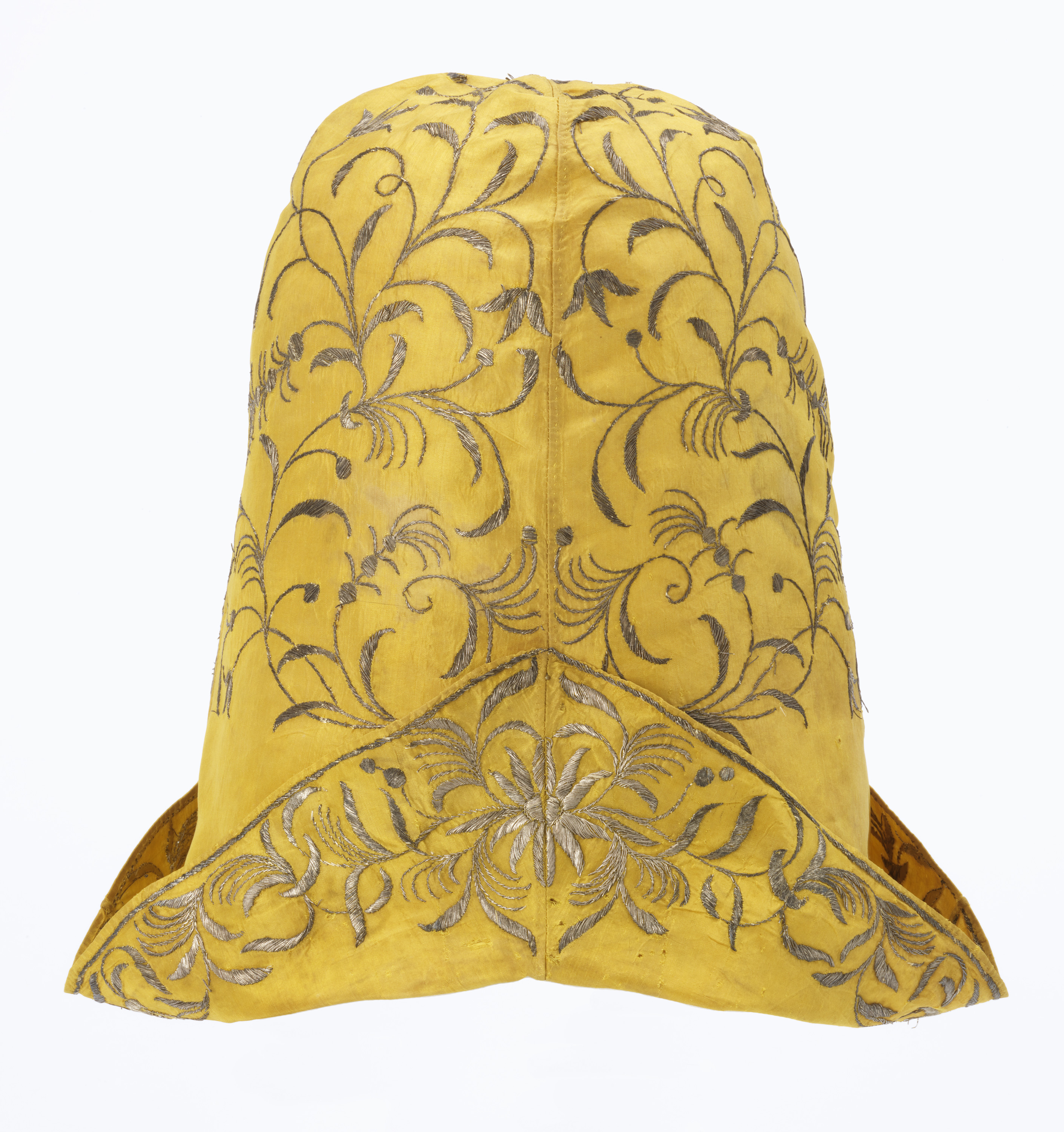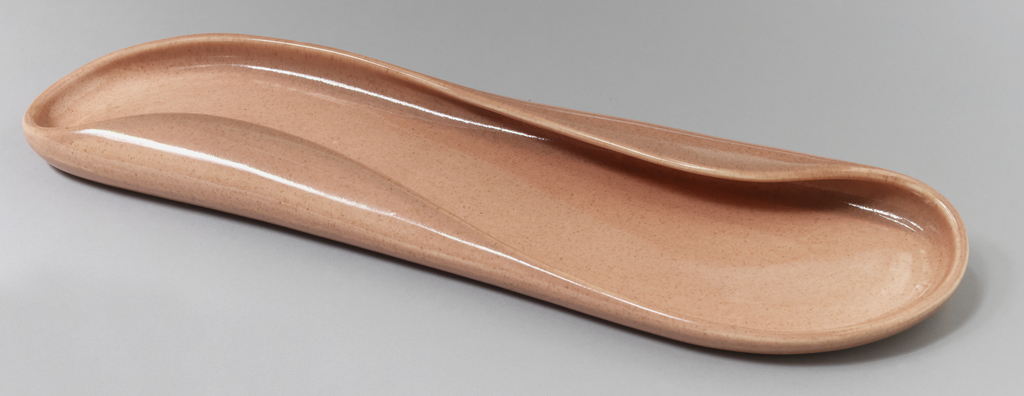Marguerita Mergentime is noted for her innovative use of text as a decorative element, and among her many sources of inspiration were books of calligraphy and penmanship. The “Spencerian” of the title refers to Spencerian script, a cursive writing style developed by Platt Rogers Spencer and promoted through his 1866 book, Spencerian Key to Practical...
This textile pattern features Diana, Roman goddess of the hunt, bow in hand, accompanied by her hunting dogs and surrounding by her prey—antelopes or gazelles. Diana—as a metaphor for commerce and the hunt for profits—was a popular theme in the 1920s. This highly stylized rendering of the huntress surrounded by prancing animals may have been...
Is it possible for a chair to be organic, imaginative, and even a little bit sexy? Perhaps, if it is one of the works by American designer Wendell Castle. Castle’s Triad chair is a piece composed of curvilinear sweeps of gilt fiberglass that make a strangely inviting seat. At the risk of pushing the pun...
Names was designed by Alexander Girard for Herman Miller in 1957. He used typography as pattern in many of his works – from textiles and wall coverings to signs, logos, and even menu layouts — by playfully mixing, transforming, and inventing fonts for whatever the project required. Sometimes he created entire alphabets while other times...
This 18th-century hat is called a nightcap, but it probably was not worn to bed. A man would use this cap to keep his head warm when he removed his wig, since a wig required short hair or a shaved head. A wig was proper attire for men of almost any status in 18th century...
Russel Wright’s massively popular American Modern Dinnerware line remained in production for 20 years—from 1939 to 1959—but that was only after Wright spent two years prodding reluctant manufacturers to mass-produce his unconventional ceramics. The line was a departure from everything that design, and tableware in particular, represented in prior years. Instead of restrained and formal,...
